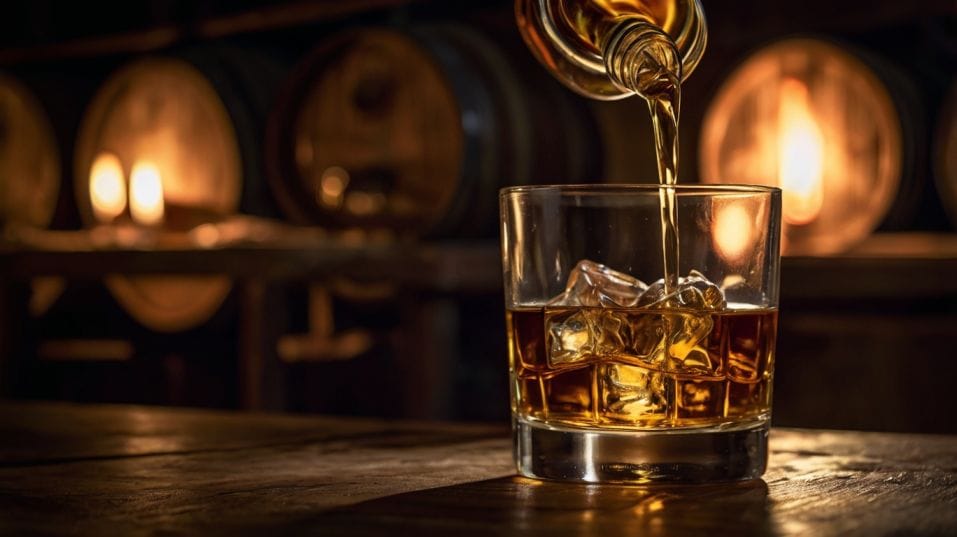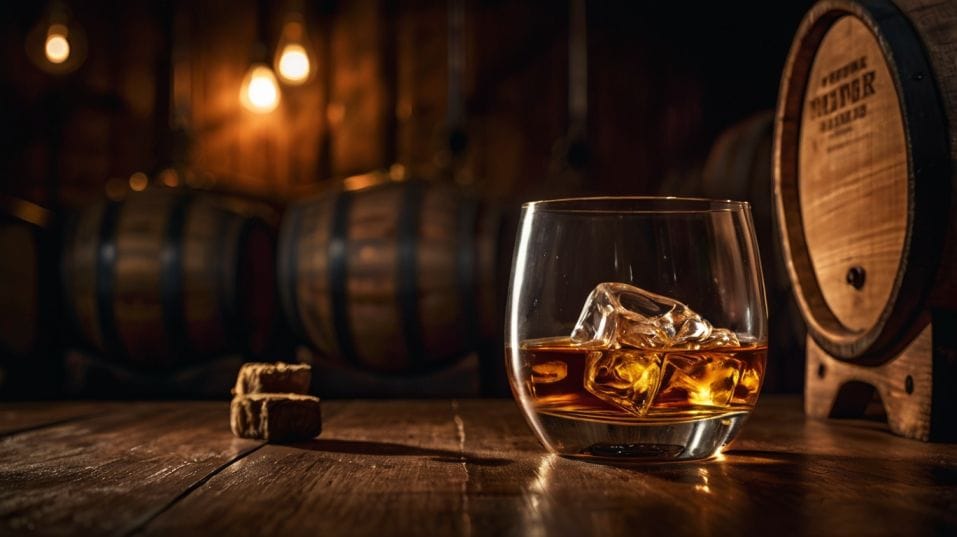The Science Behind Tasting Notes
Unlock the science behind whiskey tasting notes. Build confidence, trust your senses, and start buying and enjoying whiskey with intention.

Ever wonder how some people taste vanilla, leather, or even “damp forest floor” in a sip of whiskey—while you’re stuck at “boozy”? It’s not magic.
It’s muscle memory. Anyone can learn to pull flavors from a glass, even if you're new to whiskey.
This guide breaks down the science behind tasting notes so you can start trusting your senses, building confidence, and making smarter choices with every pour.
Flavor Starts in the Barrel (But Doesn’t End There)
Most of whiskey’s flavor doesn’t come from the grain—it comes from the wood. Charred oak barrels aren’t just containers. They’re chemistry labs.
Inside, heat, time, and spirit interact to create flavor compounds. These aren’t abstract ideas—they’re real molecules that hit your nose and tongue with specific, often intense, sensations.
Take vanillin. It’s the compound that gives off the familiar scent of vanilla, and it comes from the breakdown of lignin in toasted oak.
Or lactones, which add creamy coconut or fresh-cut wood. Phenols, which bring peat smoke into Islay scotches.

These chemical signatures don’t just show up randomly—they’re shaped by distillation technique, barrel char level, warehouse conditions, and years of aging.
Once you know what those molecules do and where they come from, you stop feeling like you’re guessing.
You start reading the whiskey like a story—grain, yeast, cut points, barrel, time, climate—and that story is told through flavor.
The Human Nose Is a Machine (You Just Need to Use It)
You’ve got around 400 olfactory receptors—and they’re far more sensitive than your tongue. Flavor is 80–90% smell.
When you’re “tasting” notes like fruit, flowers, or spice, you’re mostly smelling them retronasally—through the back of your throat and into your nasal cavity while you sip.
But those receptors need training. Memory shapes flavor perception. If you’ve never consciously smelled dried apricots, you won’t pick them up in a bourbon. But once you do, that note becomes part of your internal flavor library.
Build a Mental Archive
The good news is, you can build that library. Smell everything with purpose: fresh herbs, toasted nuts, dark chocolate, old books, clean leather, raw honey, burnt toast.
The more specific your smell memory, the more precise your tasting notes will become. It’s not about showing off—it’s about precision.
Accuracy builds confidence. Confidence lets you trust your own senses instead of deferring to the label or the reviewer.
How to Taste Like You Mean It
Skip the performance. Real tasting starts with presence. You’re not trying to “win” whiskey—you’re trying to understand it. That means slowing down and letting the glass talk to you.
Start with the nose. Don’t just take a deep whiff. Open your mouth slightly and breathe in gently.
Different aromas emerge at different intensities and temperatures. You might catch fresh orchard fruit on the first pass, then warm baking spice after a minute. Give it time.
On the palate, notice texture as much as flavor. Is it oily, drying, syrupy, thin, chewy? Those aren’t just sensations—they tell you something about the grain bill, the barrel, and the age.
Swallow, then wait. The finish is where a whiskey reveals its deeper structure. A short, bitter finish might mean a young or underdeveloped spirit. A long, evolving finish can point to complexity and balance.
Tune Into the Details
None of this needs to feel rigid. There’s no right way to experience a whiskey—but there is a better way to pay attention. Every detail gives you a clue. The longer you practice, the more fluent you get.
Tasting Notes Aren’t Pretentious—They’re Practical
Let’s be real: the world of whiskey is filled with people trying to out-note each other. Don’t fall for it. A good tasting note should help you remember what made that pour stand out—not impress the next person.
When you’re tasting, you’re building a mental map. The goal isn’t to hit some universal checklist. It’s to train your brain to recognize patterns.
That “bright citrus” note in a young bourbon might also show up in a different bottle from a totally different distillery.
Now you’ve made a connection—and connections help you buy smarter, collect smarter, and enjoy more deliberately.
Keep It Real
Write your notes in plain language. You don’t need poetry—just honesty. What did it smell like? What did it remind you of? Would you want to drink it again?
That’s enough. Over time, your descriptions will become sharper. More layered. Less vague. Not because you memorized a wheel—but because you paid attention.
Why Context Shapes Perception
Even trained tasters don’t experience whiskey the same way every time. Your surroundings, your mood, even the glass you’re using—all of it affects perception.
Try drinking the same pour in two different glasses: a Glencairn versus a rocks glass. Different notes will jump forward. Try tasting before and after dinner.
Try with the lights low, music off, no distractions. You’ll be shocked how much more you notice.
Use the Environment to Your Advantage
Temperature matters too. Colder whiskey will mute aroma and numb texture. Letting a pour warm slightly in the glass can unlock new layers.
Don’t overthink it, but don’t ignore it either—these variables are tools, not rules. Use them to get closer to what the whiskey is trying to say.
Collecting with a Taster’s Mindset
Once you know how to taste, you stop buying for the label—and start buying for the experience. You don’t need the rarest bottle on the shelf. You need the one that helps you understand something new.
A smoky scotch isn’t just a category—it’s a chance to explore how peat interacts with fruit. A young rye isn’t just “spicy”—it’s a study in grain-forward intensity.
Build a collection that teaches you something. You’ll enjoy it more, and you’ll never feel lost in a tasting room again.
Final Thoughts
Flavor isn’t magic—it’s science, memory, and curiosity working together. When you understand the chemistry behind aroma, the structure behind texture, and the sensory mechanics of how we actually taste, whiskey opens up in a whole new way.
So pour something you haven’t tried in a while. Taste it slowly, without distractions. Smell it twice. Swirl it once.
Write down what you really notice. Don’t chase tasting notes—build your own. The confidence comes next. Then do it again tomorrow. That’s how tasters are made.




